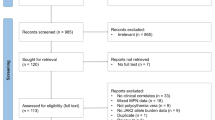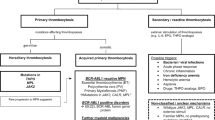Abstract
Background
Dihydropyrimidine dehydrogenase (DPD) enzyme is responsible for the elimination of approximately 80% of administered dose of 5-FU. DPD deficiency has been associated with severe 5-FU toxicity. Syndrome of DPD deficiency manifests as diarrhea, stomatitis, mucositis, and neurotoxicity and in some cases death. This is a true pharmacogenetic syndrome, with symptoms being unrecognizable until exposure to the drug.
Patients and methods
A 75-year-old patient with metastatic pancreatic adenocarcinoma developed grade 4 thrombocytopenia, grade 3 coagulopathy, and grade 3 neurologic toxicity with a fatal outcome following administration of 5-FU. Due to pancytopenia, DPD activity could not be determined in peripheral blood mononuclear cells (PBMC) using a previously described radioassay. Therefore, screening and genotypic analysis of homozygous and heterozygous, known and unknown sequence variants, in the DPYD gene were performed using DHPLC as previously described. All DPYD sequence variants identified by DHPLC were confirmed by DNA sequencing using a dideoxynucleotide chain termination method and capillary electrophoresis on an ABI 310 Automated DNA Sequencer.
Results
Genotyping analysis of the DPYD gene revealed the presence of the heterozygous mutation, IVS14 + 1 G > A, DPYD*2A.
Conclusion
Genotypic analysis using DHPLC can be employed to screen DPD deficiency in a patient with severe neutropenia. The mutation IVS14 + 1 G > A, DPYD*2A, is the most common mutation associated with DPD deficiency. A G > A base change at the splice recognition sequence of intron 14, leads to exon skipping and results in a 165-bp deletion in the DPD mRNA. We have previously demonstrated that a homozygote DPYD*2A genotype results in complete deficiency while the heterozygous DPYD*2A genotype results in partial deficiency of DPD.


Similar content being viewed by others
References
Allegra CJ, Grem JL (1997) Antimetabolites. In: DeVita VT Jr, Hellman S, Rosenberg SA (eds) Cancer: principles and practice of oncology, 5th edn. Lippincott-Raven, Philadelphia, pp 432–451
Sobrero AF, Aschele C, Bertino JR (1997) Fluorouracil in colorectal cancer: a tale of two drugs—implications for biochemical modulation. J Clin Oncol 15:368–381
Grem JL (1996) 5-Fluoropyrimidines In: Chabner BA, Longo DL (eds) Cancer chemotherapy and biotherapy: principles and practice. Lippincott-Raven, Philadelphia, pp 149–211
Ezzeldin H, Diasio R (2004) Dihydropyrimidine dehydrogenase deficiency, a pharmacogenetic syndrome associated with potentially life-threatening toxicity following 5-fluorouracil administration. Clin Colorectal Cancer 4:181–189
Johnson MR, Diasio R (2001) Importance of dihydropyrimidine dehydrogenase (DPD) deficiency in patients exhibiting toxicity following treatment with 5-fluorouracil. Adv Enzyme Regul 41:151–157
Van Kuilenburg AB, Haasjes J, Richel DJ, Zoetekouw L, Van Lenthe H, DeAbreu RA, Maring JG, Vreken P, Van Gennip AH (2000) Clinical implications of dihydropyrimidine dehydrogenase (DPD) deficiency in patients with severe 5-fluorouracil-associated toxicity; identification of new mutations in the DPD gene. Clin Cancer Res 12:4705–4012
Saif MW, Mattison L, Carollo T, Ezzeldin H, Diasio RB (2006) Dihydropyrimidine dehydrogenase deficiency in an Indian population. Cancer Chemother Pharmacol 58(3):396–401
Saif MW, Diasio R (2006) Is capecitabine safe in patients with gastrointestinal cancer and dihydropyrimidine dehydrogenase deficiency? Clin Colorectal Cancer 5(5):359–362
Ezzeldin H, Okamoto Y, Johnson MR, Diasio RB (2002) A high-throughput denaturing high-performance liquid chromatography method for the identification of variant alleles associated with dihydropyrimidine dehydrogenase deficiency. Anal Biochem 306:63–73
Ezzeldin H, Johnson MR, Okamoto Y, Diasio RB (2003) Denaturing high performance liquid chromatography (DHPLC) analysis of the DPYD gene in patients with lethal 5-fluorouracil (5-FU) toxicity. Clin Cancer Res 9:3021–3028
Raida M et al (2001) Prevalence of a common point mutation in the dihydropyrimidine dehydrogenase (DPD) gene within the 5′-splice donor site of intron 14 in patients with severe 5-fluorouracil (5-FU)-related toxicity compared with controls. Clin Cancer Res 7(9): 2832–2839
Johnson MR, Yan J, Shao L, Albin N, Diasio RB (1997) Semi-automated radioassay for determination of dihydropyrimidine dehydrogenase (DPD) activity. Screening cancer patients for DPD deficiency, a condition associated with 5-fluorouracil toxicity. J Chromatogr B Biomed Sci Appl 696:183–191
Mattison LK, Ezzeldin H, Carpenter M, Modak A, Johnson MR, Diasio RB (2004) Rapid identification of dihydropyrimidine dehydrogenase deficiency by using a novel 2-13C-uracil breath test. Clin Cancer Res 10(8):2652–2658
Martin DS, Stolfi RL, Sawyer RC et al (1982) High-dose 5 fluorouracil with delayed “uridine” rescue in mice. Res 42:3964–3970
Saif MW, von Borstel R (2005) 5-Fluorouracil dose escalation enabled with PN401 (triacetyluridine): toxicity reduction and increased antitumor activity in mice. Cancer Chemother Pharmacol 27:1–7
Kelsen DP, Martin D, O’Neil J et al (1997) Phase I trial of PN401, an oral prodrug of uridine, to prevent toxicity from fluorouracil in patients with advanced cancer. J Clin Oncol 15:1511–1517
Hidalgo M, Villalona-Calero MA, Eckhardt SG, Drengler RL, Rodriguez G, Hammond LA, Diab SG, Weiss G, Garner AM, Campbell E, Davidson K, Louie A, O’Neil JD, von Borstel R, Von Hoff DD, Rowinsky EK (2000) Phase I and pharmacologic study of PN401 and fluorouracil in patients with advanced solid malignancies. J Clin Oncol 18(1):167–177
Ashour OM, Naguib FN, Panzica RP, Al Safarjalani ON, el Kouni MH (2000) Modulation of 5-fluorouracil host toxicity by 5-(benzyloxybenzyl)barbituric acid acyclonucleoside, a uridine phosphorylase inhibitor, and 2′,3′,5′-tri-O-acetyluridine, a prodrug of uridine. Biochem Pharmacol 60:427–431
Author information
Authors and Affiliations
Corresponding author
Additional information
This work was supported in part by NIH grant CA 62164.
Rights and permissions
About this article
Cite this article
Saif, M.W., Ezzeldin, H., Vance, K. et al. DPYD*2A mutation: the most common mutation associated with DPD deficiency. Cancer Chemother Pharmacol 60, 503–507 (2007). https://doi.org/10.1007/s00280-006-0392-5
Received:
Accepted:
Published:
Issue Date:
DOI: https://doi.org/10.1007/s00280-006-0392-5




